Exercising with “feel fuller” supplement could boost fat burn
Check out the full article here: University of Glasgow
Check out the full article here: University of Glasgow

Nutrizione e Farmaceutica La nutraceutica, termine che unisce “nutrizione” e “farmaceutica”, rappresenta una disciplina scientifica che esplora e studia il

Qualitativi o Quantitativi? La natura dei dati (informazioni) è un tema cruciale per comprendere come possiamo analizzarli ed interpretarli. Semplificando,

Un viaggio sensoriale La cucina indiana è un viaggio sensoriale che affonda le radici in una tradizione millenaria, dove le spezie non
Check out the full article here: University of British Columbia

La relazione tra nutrizione e qualità del sonno è un campo di studio sempre più rilevante, supportato da una crescente

Nutrizione e Farmaceutica La nutraceutica, termine che unisce “nutrizione” e “farmaceutica”, rappresenta una disciplina scientifica che esplora e studia il
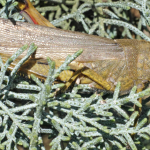
Nuovi alimenti: insetti. Regolamento di esecuzione (UE) 1975/2021 del 12 novembre 2021 che autorizza l’immissione sul mercato della Locusta migratoria
Check out the full article here: Cornell University

Nutrizione e Farmaceutica La nutraceutica, termine che unisce “nutrizione” e “farmaceutica”, rappresenta una disciplina scientifica che esplora e studia il

Un viaggio sensoriale La cucina indiana è un viaggio sensoriale che affonda le radici in una tradizione millenaria, dove le spezie non
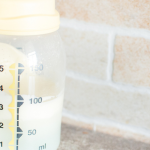
Nuovo alimento: 3-fucosillattosio (3-FL). Regolamento di esecuzione (UE) 2029/2021 del 19 novembre 2021 che autorizza l’immissione sul mercato del 3-fucosillattosio
Regolamento di esecuzione (UE) 2164/2019 del 17 dicembre 2019 che modifica il Regolamento (CE) 889/2008 recante modalità di applicazione del Regolamento (CE) 834/2007 relativo alla produzione biologica e all’etichettatura dei prodotti biologici, per quanto riguarda la produzione biologica, l’etichettatura e i controlli.

Qualitativi o Quantitativi? La natura dei dati (informazioni) è un tema cruciale per comprendere come possiamo analizzarli ed interpretarli. Semplificando,

Prodotti originari del Giappone (incidente di Fukushima). Condizioni speciali per l’importazione di alimenti per animali e prodotti alimentari originari del
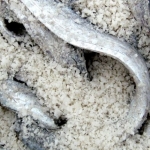
Mercurio nei prodotti alimentari. tenori massimi di mercurio nel pesce e nel sale.
Regolamento di esecuzione (UE) 2093/2019 del 29 novembre 2019 che modifica il Regolamento (CE) 333/2007 per quanto riguarda l’analisi di 3-monocloro-1,2- propandiolo (3-MCPD) esteri degli acidi grassi, glicidil esteri degli acidi grassi, perclorato e acrilammide.

Prodotti originari del Giappone (incidente di Fukushima). Condizioni speciali per l’importazione di alimenti per animali e prodotti alimentari originari del

Mercurio nei prodotti alimentari. tenori massimi di mercurio nel pesce e nel sale.
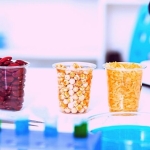
Raccomandazione (UE) 553/2022 del 5 aprile 2022 relativa al monitoraggio della presenza di tossine dell'Alternaria negli alimenti
Hi there!
Here we are with a new breakfast idea 💪, hopefully healthy, tasty and easy to prepare 🙂
Cake:
Topping decoration:
Combine cocoa powder and the natural white yogurt, stir well until smooth and the desired consistency is reached. Place the cream in the fridge for 5 to 10 minutes. Meanwhile, in a bowl (or a mug), whisk together all the ingredients, adding the baking powder last. Then, just cook it with the technique described afterward. Once the cake is cooked, garnish it with the cocoa cream and coconut flakes on top just before serving.
Water-bath cooking: place a saucepan on the stove over a medium heat, followed by about 1-2 glasses of water depending on the size of the saucepan (generally, about half-way up the sides of the teacups). Bring the water to a boil and then reduce to a simmer. Then, carefully add in the bowl. Cover it with a lid or tightly with aluminum foils. Let it cook for 20-25 minutes until set. Remove the lid e let it be for 3-4 minutes for all the steam to go away. Take the bowl out of the water-bath. Allow the cake to cool to room temperature and chill it in the refrigerator overnight. By the time, morning arrives, and it is ready to be served garnished with the sauce and cocoa cream or any other topping you desire.
Cooking tip: if there’s too much water, it can splash into the teacups ruining your puddings. If there’s too little, your bowl-cake won’t cook properly. The steam helps to keep the top of our product from becoming too dry.
Average nutritional values:
| g per 100g | % RI* | |
| Energy (kcal) | 135 | 6,7 |
| Fat | 7,8 | 11,1 |
| of which | ||
| saturates | 5,2 | 26,2 |
| Carbohydrates | 5,7 | |
| of which | ||
| sugars | 2,2 | 2,5 |
| Fibre | 2,8 | |
| Protein | 9,0 | |
| Salt | 0,9 | 14,4 |
*RI: Reference Intake, EU FIC Annex XIII part B) for front of pack (FoP) nutrition labels

Qualitativi o Quantitativi? La natura dei dati (informazioni) è un tema cruciale per comprendere come possiamo analizzarli ed interpretarli. Semplificando,

Un viaggio sensoriale La cucina indiana è un viaggio sensoriale che affonda le radici in una tradizione millenaria, dove le spezie non
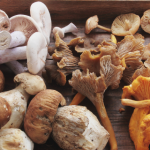
I funghi sono un supercibo? Il consumo di funghi può ridurre il rischio di depressione. I funghi da sempre sono
Farina di semi di carrube (Ita), locust bean gum (Eng), farine de graines de caroube (Fra), Goma garrofín (Esp), Johannisbrotkernmehl (Deu).
Categoria funzionale: stabilizzante, addensante, agente legante (tablet binder).
Numero E: 410.
Numero CAS: [9000-40-02].
Peso molecolare: 50-3000 kDa, dato da galattomannani (D-galattosio + D-mannosio). Rapporto mannosio:galattosio circa 4:1.
Forma: polvere fine, di colore chiaro o tendente al giallo-marrone, quasi priva di odore e gusto.
Densità media (tapped, g/cm3): 0,6-0,7.
pH (soluzione acquosa al 1% w/v): 5,0 – 5,5.
Solubilità: solo parzialmente solubile e idratabile in acqua fredda anche se oggi, versioni “cold-soluble” sono presenti sul mercato. Solubile in acqua calda (generalmente 85-90 °C per 10 minuti sono necessari per una sua completa solubilizzazione). Insolubile in molti solventi organici e in etanolo.
Produzione: la farina di semi di carrube è ottenuta dalla macinazione dell’endosperma dei semi semi dalla Ceratonia siliqua, albero da frutto appartenente alla Famiglia delle Fabaceae (Leguminosae) e diffuso nel bacino del Mediterraneo. La produzione è generalmente più complessa e comprende diverse fasi successive a quelle sopra descritte, quali ad esempio, la dissoluzione della polvere, la sua una filtrazione dopo precipitazione e l’essiccamento.
Definizione (dal Regolamento (UE) 231/2012 del 9 marzo 2012): la farina di semi di carrube è costituita dall’endosperma macinato dei semi di ceppi naturali della pianta del carrube, Ceratonia siliqua (L.) Taub. (famiglia delle Leguminosae). Essa è costituita essenzialmente da un polisaccaride idrocolloidale ad alto peso molecolare, composto principalmente da unità del galattopiranosio e del mannopiranosio collegate attraverso legami glucosidi, che può essere chimicamente descritto come un galattomannano.
Impiego: la farina di semi di carrube è diffusamente impiegata in ambito alimentare, farmaceutico e cosmetico. in combinazione con lo xantano si possono creare gel elastici e, in rapporto 1:1, originare gel termo-reversibili. Miscelandolo opportunamente con la k-carragenina e/o la gomma di guar si possono incrementare la forza e l’elasticità del gel (sinergismo). A differenza di altri idrocolloidi, è poco sensibile alla presenza di cationi mono- e bi-valenti. Tra gli alimenti che più frequentemente possono contenere farina di semi di carrube, in percentuali variabili dallo 0,1 allo 0,5%, si possono citare i gelati, dessert, dressing e salse da condimento. Una dispersione acquosa all’1% di una farina di semi di carrube “high grade”, ha un valore di viscosità dinamica pari a circa 2500-2800 mPa·s (25 °C). La misura della viscosità è poco influenzata dal pH nel range di 3,5-10.
Limitazioni nel dosaggio d’impiego (dal Regolamento (UE) 1129/2011) a seconda dei casi nella misura dei mg/kg o mg/l, seguono alcune indicazioni sui livelli massimi d’impiego consentiti. 01.6.2 prodotti a base di panna o crema di latti non aromatizzati, ottenuti con fermenti lattici vivi, e loro succedanei, con tenore di grassi inferiore al 20%, quantum satis. 04.2.3 ortofrutticoli in recipienti. 04.2.5.2 confetture, gelatine e marmellate di frutta e crema di marroni, quali definite dalla Direttiva 2001/113/CE, 10.000. 04.2.5.3 altre creme da spalmare analoghe a base di frutta e ortaggi, 10.000. 11.4.1 edulcoranti da tavola in forma liquida, quantum satis. 11.4.2 edulcoranti da tavola in polvere, quantum satis. 13.1.2 alimenti di proseguimento, quali definiti dalla Direttiva 2006/141/CE, 1.000. 13.1.3 alimenti a base di cereali e altri alimenti destinati ai lattanti e ai bambini, quali definiti dalla Direttiva 2006/125/CE, 10.000 (solo alimenti a base di cereali e alimenti destinati ai lattanti trasformatati), 20.000 (solo alimenti a base di cereali senza glutine). 13.1.4 altri alimenti per bambini nella prima infanzia, 10.000. 13.1.5.1 alimenti dietetici destinati a fini medici speciali per lattanti e alimenti speciali per lattanti, 10.000 (a partire dalla nascita, nei prodotti destinati a ridurre il riflusso gastroesofageo). 13.1.5.2 alimenti dietetici destinati a fini medici speciali per lattanti e bambini nella prima infanzia, quali definiti dalla Direttiva 1999/21/CE, 10.000 (a partire dalla nascita, nei prodotti destinati a ridurre il riflusso gastroesofageo).
Limitazioni nel dosaggio d’impiego (dal Regolamento (UE) 1130/2011), quantum satis come coadiuvante negli additivi alimentari, additivi alimentari, compresi i coadiuvanti, negli enzimi alimentari, additivi alimentari nei nutrienti.

Qualitativi o Quantitativi? La natura dei dati (informazioni) è un tema cruciale per comprendere come possiamo analizzarli ed interpretarli. Semplificando,

Digiuno intermittente e salute. Secondo uno studio dei ricercatori dell'University of Illinois Chicago, il digiuno intermittente avrebbe effetti evidenti sulla

Un nuovo studio, 134 studi nidificati in 120 articoli, sostiene che l’etichettatura frontale nel packaging degli alimenti (front-of-pack labelling) potrebbe
Hi there!
Skipping breakfast could throw off your body’s rhythm of fasting and eating, therefore it is really important to choose the morning meal that nourishes and fuel the body.
Here is one of our favorite tasty breakfast recipes to super-charge your morning.
Cake base:
Creamy filling:
Before start cooking, apply coconut oil generously to the entire inside of the saucepan (a small one, 10 cm in diameter).
Ok, go ahead 🙂 .
In a bowl, whisk together all the ingredients and let the batter rest for 2-3 minutes. Put the saucepan on low heat. Add the batter to the saucepan, then cover and cook for around 2-3 minutes.
As soon as the batter begins to thicken, add the blueberries and continue to cook for 13 to 15 minutes more. This step should prevent the fruit from sinking to the bottom.
Once the surface of the cake appears to thicken, turn it over and put it back into the pan to finish cooking for 2-4 minutes more.
Transfer the cake to a plate (or a cooling rack) and let it cool down. Flip the cake over and from the bottom, gently remove a circular piece of dough with a stamp, a knife or even a melon baller.
Fill your cake using a teaspoon or a piping bag. Pick up the circular piece you removed from the bottom and place it back as a plug to seal the filling in.
Chill it in the refrigerator overnight. Taste it cold or at room temperature.
Average nutritional values:
| g per 100g | % RI* | |
| Energy (kcal) | 127 | 6,4 |
| Fat | 3,4 | 4,8 |
| of which | ||
| saturates | 0,7 | 3,3 |
| Carbohydrates | 14,3 | |
| of which | ||
| sugars | 4,5 | 5,0 |
| Fibre | 1,7 | |
| Protein | 8,9 | |
| Salt | 0,8 | 13,8 |
*RI: Reference Intake, EU FIC Annex XIII part B) for front of pack (FoP) nutrition labels
Make your choice and enjoy it!

Qualitativi o Quantitativi? La natura dei dati (informazioni) è un tema cruciale per comprendere come possiamo analizzarli ed interpretarli. Semplificando,

Un viaggio sensoriale La cucina indiana è un viaggio sensoriale che affonda le radici in una tradizione millenaria, dove le spezie non

I funghi sono un supercibo? Il consumo di funghi può ridurre il rischio di depressione. I funghi da sempre sono

Questo sito Web utilizza i cookie in modo da poterti offrire la migliore esperienza utente possibile. Le informazioni sui cookie sono memorizzate nel tuo browser e svolgono funzioni come riconoscerti quando torni sul nostro sito Web e aiutare il nostro team a capire quali sezioni del sito Web ritieni più interessanti e utili.
I cookie strettamente necessari dovrebbero essere sempre attivati per poter salvare le tue preferenze per le impostazioni dei cookie.
Se disabiliti questo cookie, non saremo in grado di salvare le tue preferenze. Ciò significa che ogni volta che visiti questo sito web dovrai abilitare o disabilitare nuovamente i cookie.
Questo sito utilizza Google Analytics per raccogliere informazioni anonime come il numero di visitatori del sito e le pagine più popolari. Mantenere abilitato questo cookie ci aiuta a migliorare il nostro sito web.
Attiva i cookie strettamente necessari così da poter salvare le tue preferenze!
Per ulteriori informazioni Cookies policy
